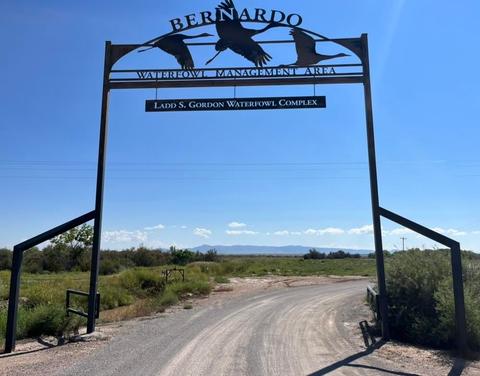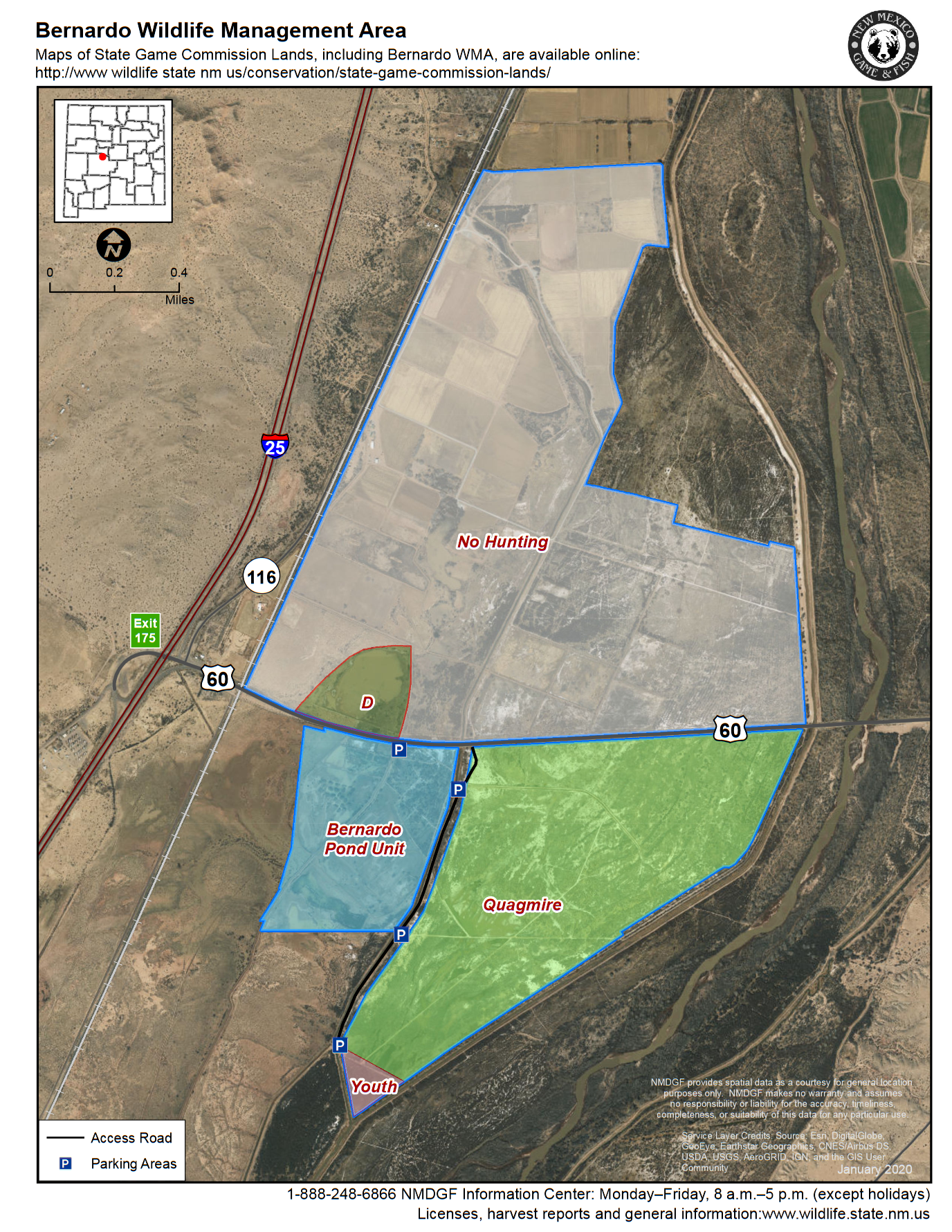
Bernardo Wildlife Management Area
Bernardo Wildlife Management Area
Bosque, New Mexico 87006
Bernardo Wildlife Management Area information sheetBernardo Wildlife Management Area map
Tips for Birding
Bernardo Wildlife Management Area contains 1 no-hunting area and 4 separate areas open to hunting. One of the hunt areas, the Pond Unit, is itself a discrete hotspot, though wholly contained within the WMA. Additionally, another hotspot, the Bernardo Bosque, is located just east of the WMA, between the San Francisco Drain and the Rio Grande River. Therefore, it is helpful if birders will indicate in their checklist comments precisely where they birded.
Good binoculars are important. The best time to view wildlife is at dawn or dusk. Per a long-unrevised New Mexico State Game and Fish Department page, "To protect wildlife and public safety, wildlife viewing, photography, and hiking are restricted to the Auto Tour Route, parking areas, and viewing platforms." This may be describing access to the no-hunt section; access rules for hunting areas could be different. Birders should be mindful of areas open to hunting, as well as hunt seasons.
Birds of Interest
Birders are attracted to this hotspot primarily by the waterbirds, present from mid-October through mid-March, particularly the large numbers of Snow Geese and Sandhill Cranes. May through September, however, sees an influx of passerines, notably Bell's Vireo, officially threatened in New Mexico. eBirders can help track whether water management infrastructure improvements begun in winter 2021-2022 increase the historically only-occasional observations of regionally endangered Willow Flycatcher and threatened Yellow-billed Cuckoo.
About this Location
Part of the Ladd S. Gordon Waterfowl Complex, Bernardo Wildlife Area, 1675 acres, is located between Belen and Socorro between I-25 and the Rio Grande. Bernardo Wildlife Area was purchased in 1971 to provide habitat and food for wintering waterfowl.
The area contains mostly flat croplands. In the late fall and winter, fields are flooded for waterfowl to roost in.
Content from Bernardo Wildlife Management Area information sheet
Last updated February 19, 2024

